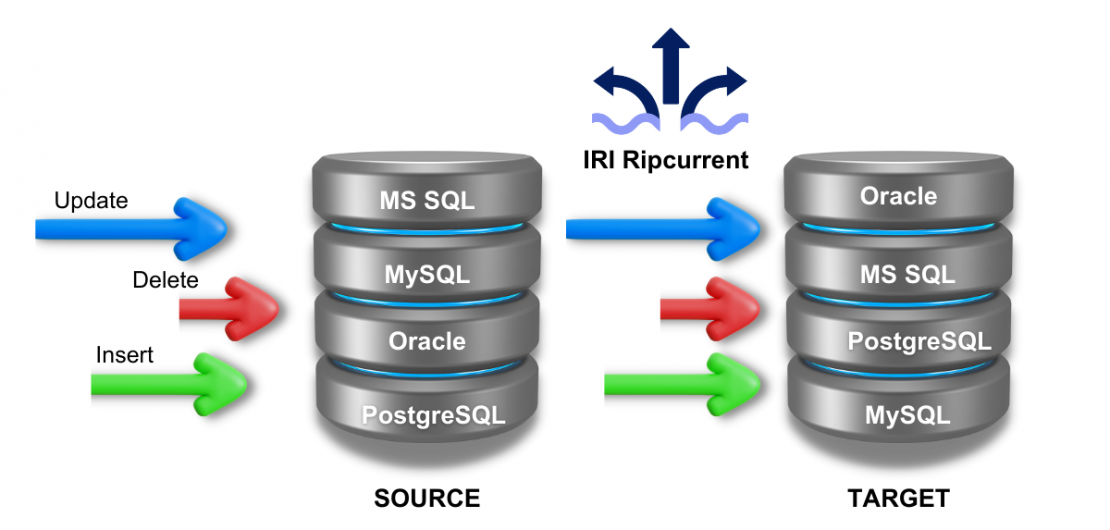Data replication strategies and data synchronization tools vary widely. IRI data replication technologies in general, and its real-time database replication techniques in particular, can help you rapidly and affordably copy, manipulate, and synchronize data from heterogeneous data sources so you can use regular, fresh copies of data for testing, reporting, or other applications.
Replicate huge amounts of relational database, mainframe datasets, flat files, and other sequential data sources using real-time change data capture methods, or batch programs, using software front-ended in the IRI Workbench IDE, built on Eclipse™.
As you review the use cases below, consider how IRI data and database replication software is unique among real-time data replication tools; i.e., it is
- scalable in volume (via multi-threading and task and I/O consolidation)
- database- and platform-agnostic
- reliable in terms of data (and referential) integrity
- functionally flexible, whether in batch or real-time
- less expensive and easier-to-use than replication software like GoldenGate
Examples
Do you have a single source of data to re-cast in another format? To copy the data in a non-relational COBOL index file to a CSV file for Excel or other relational target, use IRI NextForm to convert the file format. See this basic example.
Do you have a simple replication set, or database subset you need to acquire and transmit to other users? Use IRI CoSort or IRI FieldShield (or the larger IRI Voracity data management platform which includes them) to do that, and to mask personally identifiable information (PII) at the same time.*
Replicate multiple sources (like relational or NoSQL DB tables) at once, output to multiple schemas or other targets, or perform manipulations along the way like:
- de-duplication and selection
- splitting, merging data elements
- cleansing, enrichment and validation
- change data capture
- normalizing or de-normalizing
- sorting, joining, and aggregation
- data masking, encryption, and so on
You can perform and combine the above tasks into one or more jobs defined in fit-for-purpose wizards and ETL workflows in Voracity. Run these transformations jobs on the fly during replication in Voracity, and as data masking scripts that run alongside DB cloning operations in Windocks, Commvault or Actifio, for example.
Use the real-time IRI Ripcurrent change data capture facility in IRI Voracity to refresh, mask, cleanse, transform, or report on data incrementally when MS SQL, MySQL, Oracle, and PostgreSQL database rows are inserted, updated or deleted, or notify you when their structure changes.

Otherwise, you can also insert event-driven triggers ahead of the jobs, or filter on timestamp or ID column values to replicate only the newer rows, as in that example between Oracle and MongoDB.
Design, run, and manage all these data mappings in in the free IRI Workbench IDE for Voracity et al, built on Eclipse. Deploy the resulting, self-documenting job scripts on any platform. Send the results directly to your targets, federation sources, or a replication server.
You can even use the output mappings you create to auto-define new table metadata and load utility configuration files to populate your targets with pre-sorted data!
*To provide test data in any format without accessing or replicating production data, use IRI RowGen.


